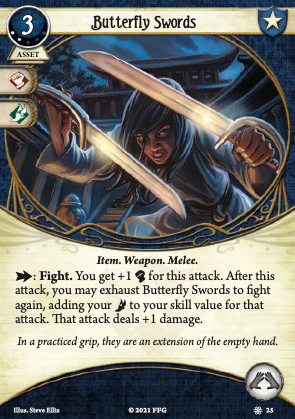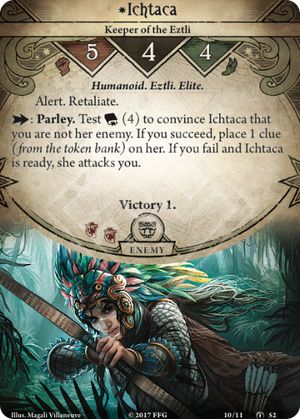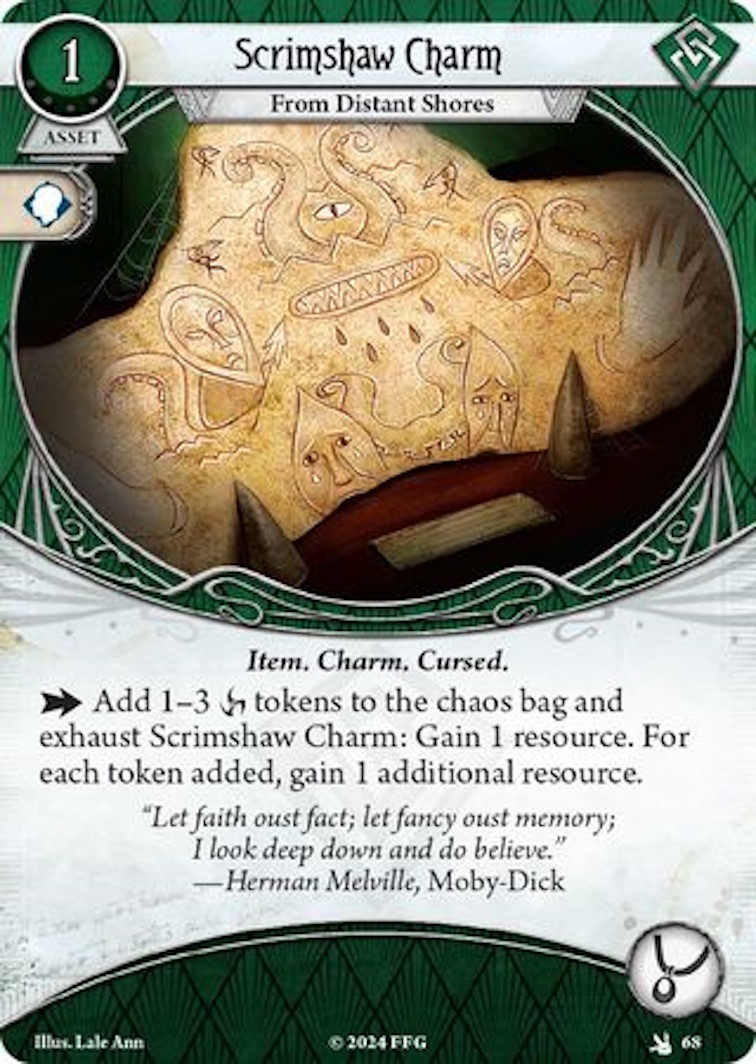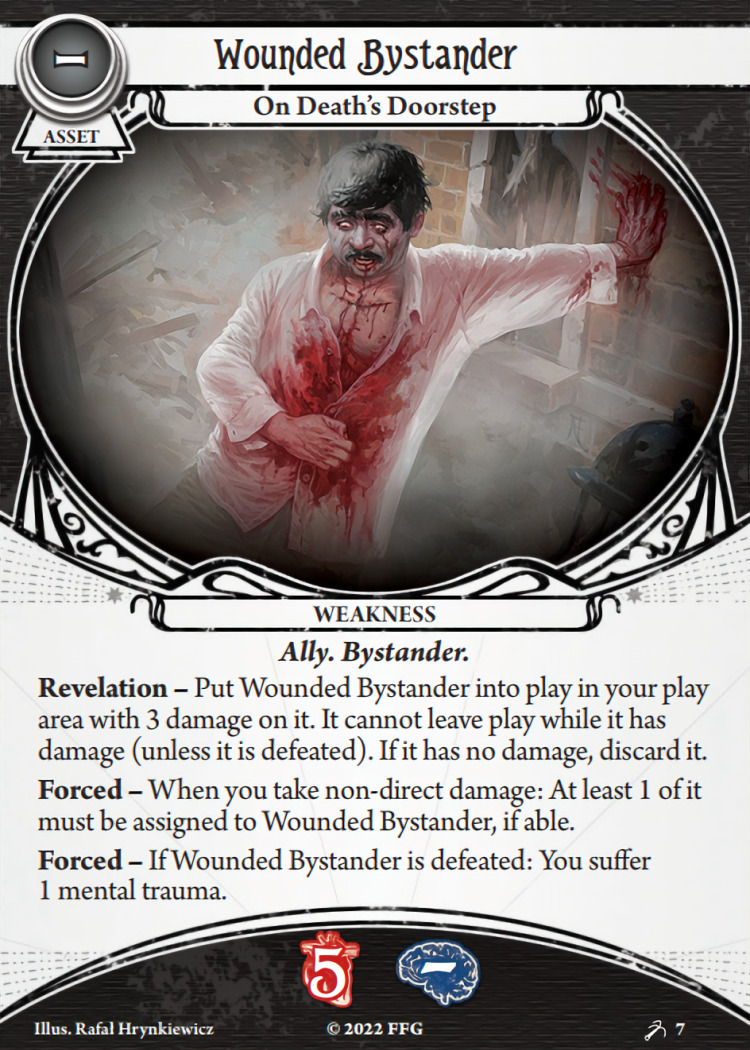
This should have been green. In principle, it could be really powerful for a specific playstyle. Unfortunately, that playstyle doesn't really exist yet, at least not for anyone who can include the card and cope with its quirks.
TLDR
--This is not a weapon for boss killers or full time fighter. -- If you plan to fight three or more times per turn it is very bad, and lots of characters can fight more than three times when the chips are down. --It is terrible against retaliate, damage reduction, enemies that punish attacking/damaging them, and bad stuff token effects. --It is very efficient for flex-fighters who want to attack only once or twice per turn --Especially if they care about evasion or oversuccess --Unfortunately the two hand slots are a big ask for flexes --And few people who would want this can actually include it
The Good
- Dealing 3 damage in one action is really good, and this can do that once per turn forever
- It can also deal 4 damage over two actions like a normal weapon.
- Against 1-3 health enemies you're killing much more reliably in fewer actions, although also at more risk of triggering fail effects. Compared to Machete or Brand, you get two chances instead of 1 to deal 1 damage in 1 action. If you only need 2 actions you only need to pass your +foot test which should be very high skill. If you need 3 damage in two action you do need to pass the foot test but only one of the two basic attacks, where Brand-likes have to pass 2 out of 2 checks.
The Weird
- As Lockpicks has shown us, combining 2 stats can be really good.
- However, there is more support for stacking +foot +book together than +fist +foot, IMO.
- Also unlike lockpicks, this only uses foot sometimes, and it forces you to make fist+1 checks first.
- Most guardians only have 2 or 3 agility, so the second attack is only +1-2 points better than the first one without further boosting. Guardians also have lots of other ways to boost attacks with XP. Making a +1 to hit weapon Reliable or Enchanted for instance might help you more.
- If your agility is 4+, then the gap between your first and second skill checks becomes a problem. On standard the distance between "uncomfortably risky" and "all-but-guaranteed" tends to be about 2 skill points. A 5/4 investigators swings this at 6/9/6, but either the 6s are very risky or the 9 is overkill.
- The whole point of doing all your killing in your first action is to spend your time doing something else useful. But this takes up both of your hands, which greatly limits your options.
- So the ideal user for these would be a high-agility flex character who can get clues with their hands full.
Synergies and Possibilities.
Part 1 -- Should Have Been Green
- Lots of rogues reach 7 or 8 natively with the 2-damage swing, which is better than their other level 2 weapons
- Triggers lucky cigarettes easily
- You could use Hidden Pocket to carry a Lockpicks or Thieves Kit alongside
- with Dirty Fighting you can evade, get +2 to the weaker first swing and then follow up with the +agility second swing for huge skill tests and action compression.
- Evade also turns off retaliate
- Sadly, Winifred/Kymani/Finn can't access this and Skids is still really bad.
Part 2 -- Other clue options
If you can't scam hand slots for an investigate tool, you could rely on snapping up clues from events/allies/skill cards or investigating with spells. That would make you some kind of weird tri-stat build by maybe it's doable if you stack multi-boosters like Crystalline Elder Sign, Dark Horse, Geas, or Composures.
Part 3 -- As a sidearm
You could of course plan to use these just for one 3-damage action per turn and then to follow up with other attack forms. You could soften groups with Mk 1 Grenades and then split attacks to finish multiple wounded enemies, supplement with a spell, or get Bandolier, Boxing Gloves and some martial arts moves. With off-class access you could fold in other once-per-round shenanigans like Chuck-boosted actions, Hatchet throws, and the like.
Part 4 -- The secret super-synergy
The card that actually breaks this wide open is, obviously, Sled Dog. With even 2 dogs down you get two chances per turn to deal 2 damage in one action, at +2 and +AGI respectively, and if you proc retaliate you can throw the dogs under the bus. If you can reach 3 dogs you now have 3 damage twice per round, or the ability to zoom across the map to deliver your 3-damage flurry. If only Leo Anderson's agility weren't 1.



